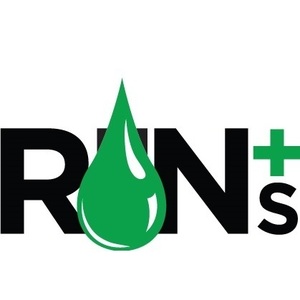EPA: 1.05 billion RINs generated in April

June 2, 2020
BY Erin Krueger
The U.S. EPA has released updated renewable identification number (RIN) generation data, reporting that 1.05 billion RINs were generated under the Renewable Fuel Standard in April, down from 2.74 billion generated during the same period of last year. The decrease can primarily be attributed to market factors caused by the COVID-19 pandemic.
More than 40.39 million D3 cellulosic biofuel RINs were generated in April, down from 73.86 million during the same month of last year. The 40.39 million D3 RINs generated in April 2020 includes 30.95 million generated for compressed renewable natural gas (RNG) by domestic producers, 6.33 million generated for liquefied RNG by domestic producers, 2.06 million generated for liquefied RNG by importers, 847,999 generated for compressed RNG by importers, and 203,361 generated for cellulosic ethanol by domestic producers.
More than 112.76 million D3 RINs were generated during the first four months of 2020. That volume includes 86.21 million generated for compressed RNG by domestic producers, 17.34 million generated for liquefied RNG by domestic producers, 6.04 million generated for liquefied RNG by importers, 2.45 million generated for compressed RNG by importers, and 711,318 generated for cellulosic ethanol by domestic producers.
No D7 cellulosic diesel RINs have been generated so far this year.
Advertisement
Advertisement
Nearly 9.49 million D5 advanced biofuel RINs were generated in April, down from 33.51 million generated during April 2019. The 9.49 million generated in April 2020 includes 4.54 million generated for nonester renewable diesel by domestic producers, 2.64 million generated for naphtha by domestic producers, 1.99 million generated for ethanol by domestic producers, 319,080 generated for renewable heating oil by domestic producers, and 8,244 generated for compressed RNG by domestic producers.
Nearly 89.09 million D5 RINs were generated during the first four months of this year. That volume includes 23.13 million generated for nonester renewable diesel by domestic producers, 44.32 million generated for ethanol by importers, 11.77 million generated for naphtha by domestic producers, 7.7 million generated for ethanol by domestic producers, 1.47 generated for renewable heating oil by domestic producers, 691,549 generated for LGP by domestic producers, and 8,244 generated for compressed RNG by domestic producers.
More than 644.89 million D6 renewable fuel RINs were generated in April, down from 1.9 billion generated during the same period of last year. The 644.89 million generated in April 2020 includes 328.05 million generated for ethanol by domestic producers, 16.27 million generated for nonester renewable diesel by foreign producers, and 575,961 generated for ethanol by importers.
Advertisement
Advertisement
More than 4.2 billion D6 RINs were generated during the first four months of 2020. That volume includes 4.12 billion generated for ethanol by domestic producers, 76.64 million generated for nonester renewable diesel by foreign producers, and 3.5 million generated for ethanol by importers.
More than 356.7 million D4 biomass-based diesel RINs were generated in April, down from 732.8 million generated in April of last year. The 356.7 million D4 RINs generated in April 2020 includes 223.96 million generated for biodiesel by domestic producers, 59.5 million generated for nonester renewable diesel by domestic producers, 41.78 million generated for nonester renewable diesel by foreign producers, 27.8 million generated for biodiesel by importers, 3.51 million generated for nonester renewable diesel by foreign producers, and 152,264 generated for renewable jet fuel by domestic producers.
More than 1.34 billion D4 RINs were generated during the first four months of this year. That volume includes 816.51 million generated biodiesel by domestic producers, 251.22 million generated for nonester renewable diesel by domestic producers, 178.96 million generated for nonester renewable diesel by foreign producers, 93.48 million generated for biodiesel by importers, and 606,968 generated for renewable jet fuel by domestic producers.
Related Stories
The U.S. EPA on July 8 hosted virtual public hearing to gather input on the agency’s recently released proposed rule to set 2026 and 2027 RFS RVOs. Members of the biofuel industry were among those to offer testimony during the event.
The USDA’s Risk Management Agency is implementing multiple changes to the Camelina pilot insurance program for the 2026 and succeeding crop years. The changes will expand coverage options and provide greater flexibility for producers.
EcoCeres Inc. has signed a multi-year agreement to supply British Airways with sustainable aviation fuel (SAF). The fuel will be produced from 100% waste-based biomass feedstock, such as used cooking oil (UCO).
President Trump on July 4 signed the “One Big Beautiful Bill Act.” The legislation extends and updates the 45Z credit and revives a tax credit benefiting small biodiesel producers but repeals several other bioenergy-related tax incentives.
CARB on June 27 announced amendments to the state’s LCFS regulations will take effect beginning on July 1. The amended regulations were approved by the agency in November 2024, but implementation was delayed due to regulatory clarity issues.
Upcoming Events










